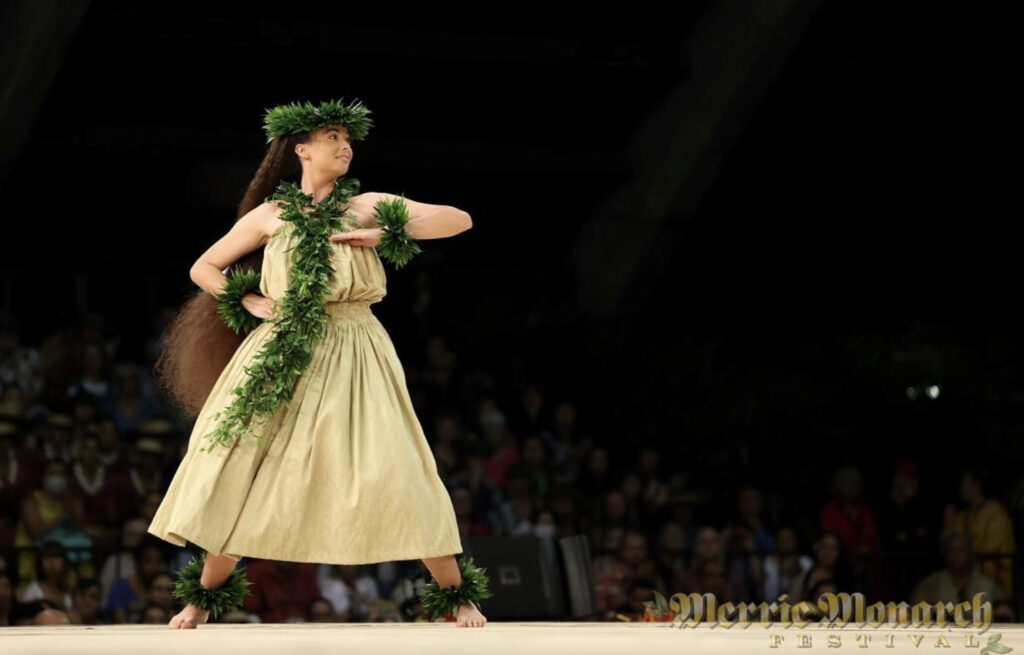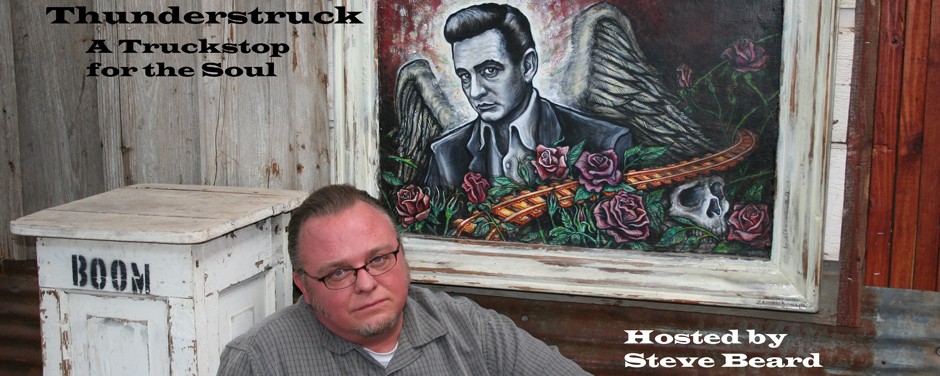
Agnes Renee Leihiwahiwaikapolionāmakua Thronas Brown at Merrie Monarch Festival. Photo: Merrie Monarch Festival Facebook.
By Steve Beard
You know you’re in a truly enchanted location when the television evening news on Maui closes out the broadcast with a graceful troupe of hula dancers. It’s not a marketing ploy. Instead, it’s part of cultural preservation – as much a part of the rhythm of Hawai’i as the pounding of poi and the crashing waves of the Pacific.
Over the years, I have learned to respect this treasured indigenous art form – language and history in motion. This past weekend, Agnes Renee Leihiwahiwaikapolionāmakua Thronas Brown won the Miss Aloha Hula competition at the 2023 Merrie Monarch Festival in Hilo, Hawai’i. For 60 years, the week-long celebration has been the top-tier competition for hula – male and female, ancient and modern, solo and group. It’s going on my bucket list.
For aficionados, the festival is the Olympics of hula for the islands. It showcases traditional chants (oli) and dances (hula kahiko), as well as modern counterparts (hula ‘auana). Through hand gestures – some resembling the steady waves of the ocean – and movements, they tell legends of the islands, great leaders, and beautiful locations. I spent my weekend watching the performances online.
A far cry from the caricature of a hula dancer doll shimmying on a car dashboard, it is an intricate and ancient dance practiced in Hawaii to regale the mythology and traditions of the islands long before European contact. It includes nuanced chants and songs in Hawaiian, hand gestures, expressions, and body movements. Hula is studied in specialized dance schools (hālau) under a highly-sought-after instructor (kumu).
The first time I saw legit hula dancing was almost 35 years ago at the Polynesian Cultural Center in La’ie, Oʻahu. Not far from the North Shore, the center highlights six South Pacific cultures: Hawaii, Fiji, Aotearoa (New Zealand), Samoa, Tahiti, and Tonga. If you’ve ever seen Elvis’ 1966 film “Paradise, Hawaiian Style,” you will recognize the location.
Growing up on the mainland, hula was for me a merely fantastical visual loop in a school boy’s mind of a Polynesian pin-up – wiggling hips, grass skirts, and random hand motions. Over the years, however, the more that I learned about hula the easier it was to appreciate the poetry and choreographed story-telling incorporated in the dance.
“Completely honored, excited, blessed, so many emotions, just so thankful mostly,” said Agnes Brown, the aforementioned winner of the Miss Aloha Hula title. A 21-year-old Chaminade University senior, she has been dancing for her hālau on Oahu since she was 9-years-old. For students, years are devoted to practice. Brown’s instructors are husband and wife team Tracie and Keawe Lopes – both university-level Hawaiian language instructors. Their hālau also took home the top honors in the group category at Merrie Monarch.
Brown’s performance, a chant called “Poli Laua’e Makana,” was written to honor Kaumualiʻi (c. 1778–1824), the last ruling king of Kaua’i and Ni’ihau. Brown’s mele (song) was called “Ku’u Home A I Kāneʻohe,” about memories of the home where she once grew up beneath the Ko’olau Mountains on Oahu.
You can Google the Merrie Monarch Festival and see the different varieties of competition. The event is dedicated to the memory of King David La’amea Kalākaua (1836-1891), known as the “Merrie Monarch.” He enjoyed entertaining guests with his singing and ukulele playing. Wanting to strengthen native Hawaiian language and culture, hula played a major role at his coronation.
Many cultures around the globe weave folk dance into their ethnic identity. The long list includes the Native American Hoop Dance, Māori haka (war dance in New Zealand), Japanese kabuki (dance/drama), Turkish Sufi Whirling (Whirling Dervishes), as well as Spanish flamenco, Brazilian samba, and the Argentine Tango.
Hula is an irreplaceably unique cultural, historical, and spiritual art form in Hawaii.
During two different visits to Maui, I witnessed inspiring hula exhibitions in Lahaina led by Kumu [teacher] Jan “Kealani” Kitaguchi. “Where the hands move, there let the eyes follow” (“Kuhi no ka lima, hele no ka maka”). Kumu Kealani leads her students at the Halau Hula Na Kamali’i Nani o Lahaina (The beautiful children of Lahaina). I photographed the second exhibition of her hālau. She was born and raised in Lahaina and has spent her life sharing and teaching hula and aloha to the next generation.
One of my favorite presentations of hula occurred at the halftime of a roller derby match I photographed in Honolulu between Pirate City (visiting from New Zealand) and the Hulagans from Oahu (representing Pacific Roller Derby). The three women who danced hula at halftime were effortlessly graceful. The roller derby fans were transfixed and watched in awe and respect. It was a fantastic evening filled with both power and poise. (Ironically, I even had a few fans at the bout talk to me about my Psych Ward Sirens roller derby t-shirt from Houston.)
Upon graduation, Agnes Brown plans to return to her alma mater Sacred Heart Academy in Honolulu to be an elementary school teacher. “One of the biggest challenges I face is when people ask, ‘What field are you studying?’ When I mention education, they ask, ‘Why?’” she told the Hawaii Catholic Herald, a few months ago. “There is a stigma going around about going into education. Of course, it is not the highest paying job. But in my opinion, it is the most rewarding ultimately. To be able to encourage young minds, and to teach around faith is so important. I am who I am because I was able to learn in a faith-based environment.”
She teaches religious education to fourth and fifth graders at St. Ann’s on Sundays. “Of my faith life, I am not the perfect Catholic. I do not think I will ever be. But Sundays are great days. … These children make it real to me that I will be able to do this every day and not only on Sundays after I graduate. To have conversations with them solely about religion and not other subjects is wonderful. It is amazing how engaged they are and uninhibited to ask questions.”
“Before my kids leave class on Sunday, I always remind them, ‘Don’t forget to talk to Jesus.'”
Education is major part of Agnes’ family identity. Her grandmother was an elementary school music teacher. Her mother has been a principal at St. Ann’s in Honolulu and now serves as associate superintendent of Hawaii Catholic Schools. Most of her aunties and cousins are also in education.
“Growing up with my mom as a teacher at St. Ann’s, I was always inspired by how she engaged her students,” Brown said in story titled “Family Ties” for Chaminade University. “I knew that education was always a passion of mine, and I knew that I loved working with kids, especially younger kids.”
“I’m a little nervous, but I’m going to make it fun for the kids,” she continued. “Education was not always fun for me. It was definitely more of a chore than anything to be excited about.”
Aloha to Agnes. All the best to her and may she pass along all the good that she has learned in her hula training to the next generation of Hawaiians.
